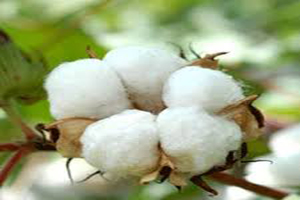
Dwindling cotton production likely to hit Pakistan textile exports target
YarnsandFibers News Bureau 2014-02-03 15:15:00 – KarachiThe Pakistan textile industry has infrastructure, finance, expertise and manpower to increase its export and achieve the GSP Plus targets set. The industry is convinced it can earn $1 billion through additional exports to the EU. However, it may not be able to perform, as required, due to non availability of certain raw materials, like cotton. If cotton production is not stepped up, it could prove to be weakest link in the whole scheme of things.
The country’s textile industry requires around 16 million bales to meet the current export orders. If the production is increased, as it should because of GSP-Plus status, the requirement, according to one estimate, may touch 20 million bales. But, as things stand today, the cotton crop is on slippery slope; losing both in acreage and production for the last many years. Over the last few years, Punjab has lost around one million acres of cotton to other competitive crops like maize and sugarcane. Its production is stuck at around 12 million bales and a little extra.
According to farmers, two factors have triggered their increasing indifference for the crop: uncertainty about the yield and declining profits. The seed crisis robs growers of some kind yield certainty, yet keeps increasing their cost of production and eating into their profits. If Pakistan is able to control seed chaos in the next two to three years, it might be able to retrieve two to three million bales lost due to low yield.
The 71 Bt varieties, being sold and sown in Pakistan, according to researchers, have the required toxin level, enough to kill the army and spotted bollworms and prevent them from developing an immunity against this particular poison. What makes the situation even worse now than the last year is the fact that around nine varieties, which were given provisional approval by the federal government three years ago, have not only seen expiry of that certification but have also gone out of vogue because of different reasons. Currently, there is no approved seed variety that can ensure certain level of germination and yield. That is exactly where the crop is stuck and increasingly conceding area to other short duration crops. With early sowing varieties in the field, cotton has become almost 10-month crop, which does not bring farmers a fair fiscal compensation. Thus farmers now go for 110-day corn crop, which gives them the margin for sowing wheat after harvesting in November.
The climate change has also worked against the cotton crop. The early advent of monsoon, as has been the case for the last few years, has increased perilous period for crop from two to five months that keeps testing the farmers’ nerves.
To take full advantage of the GSP plus facility, cotton production needs to be boosted. If the industry has to step up its imports every year, it would only end up hiking international prices and suffer hugely on its profits. The provincial governments, in particular, have to ensure the supply lines of raw material.
Market Intelligence
Ask for free sample Report

experience
Customer Base
dedicated team
Countries Served Worldwide









